Abstract
1. The disposition and kinetics of p-aminohippuric acid (PAH) were studied in 27 healthy male volunteers, 10 healthy female volunteers and 10 patients with chronic renal impairment following rapid intravenous injection of 10 mg kg-1. In addition, the renal clearances of PAH and its metabolite N-acetyl-PAH were measured in 10 of the healthy male volunteers following conventional administration of PAH by loading dose and constant infusion, and in another eight during sequential 'step-up' and 'step-down' infusions intended to maintain low, medium and high plasma concentrations below the threshold for onset of saturation of tubular transport. 2. PAH was eliminated rapidly with a mean half-life of less than 30 min in the healthy volunteers and 72 min in the renal patients. The corresponding estimates for acetyl-PAH were 49 and 153 min. In both groups the rate of disappearance of PAH slowed progressively over the period of observation and there was no true log-linear terminal elimination phase. 3. In the healthy volunteers about 50% of the dose was excreted in the urine in 30 min with quantitative recovery in 3 h. In 8 h, 17% of the dose was recovered as acetyl-PAH. In the patients with renal impairment the 8 h recovery was only 83.6% of the dose with 26.9% of the total appearing as acetyl-PAH. 4. The volume of distribution (Vss) of PAH was 16-18 l in the healthy subjects and renal patients. Acetyl-PAH appeared to have a much larger distribution volume (mean 65.5 l in the healthy volunteers). 5. In the healthy volunteers the renal clearance of PAH fell dramatically from 599 +/- 115 ml min-1 1.73m-2 during the first hour after administration to 300 +/- 208 ml min-1 1.73 m-2 during the second hour (P < 0.001). The corresponding renal clearances of acetyl-PAH were 775 +/- 196 and 916 +/- 212 ml min-1 1.73 m-2. In the patients with renal impairment the renal clearance of PAH fell from 194 +/- 83 ml min-1 1.73 m-2 in the first hour to only 61 +/- 19 ml min-1 1.73 m-2 from 4 to 6 h. Over the same period there was no significant fall in the clearances of acetyl-PAH or total PAH (acetyl-PAH + PAH).(ABSTRACT TRUNCATED AT 400 WORDS)
Full text
PDF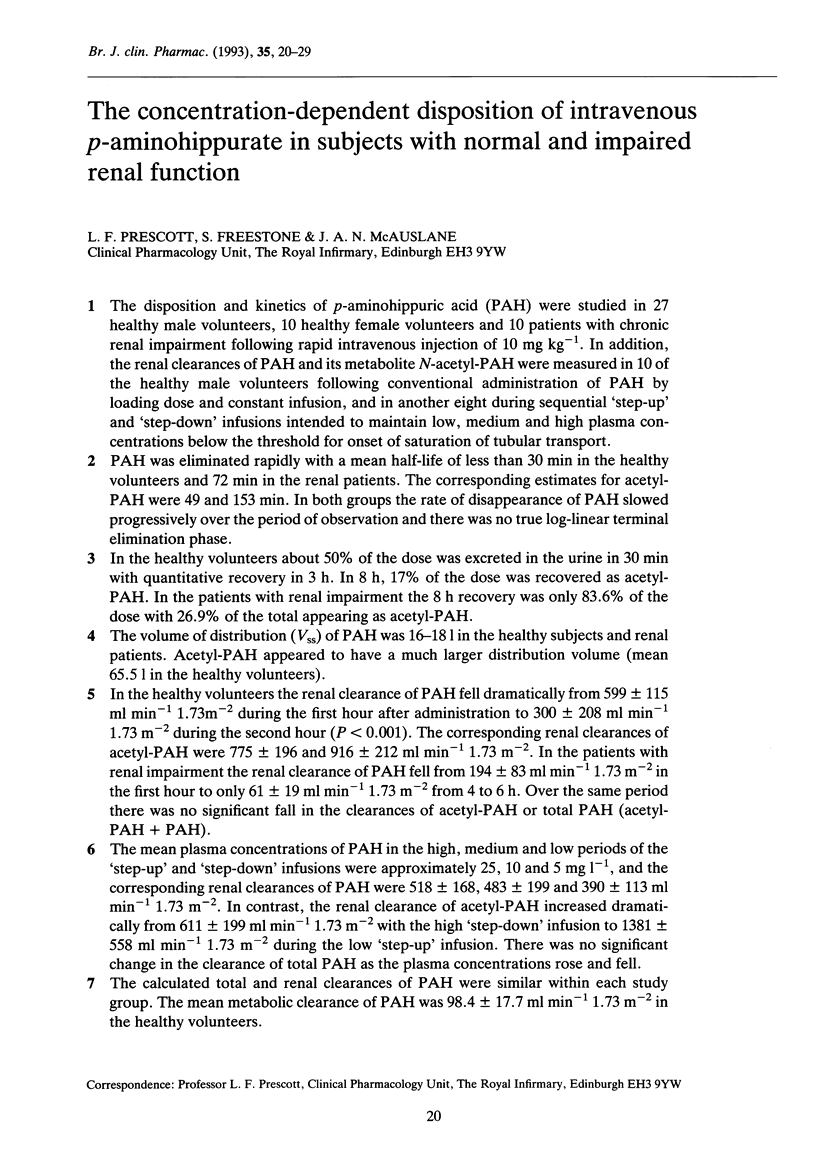
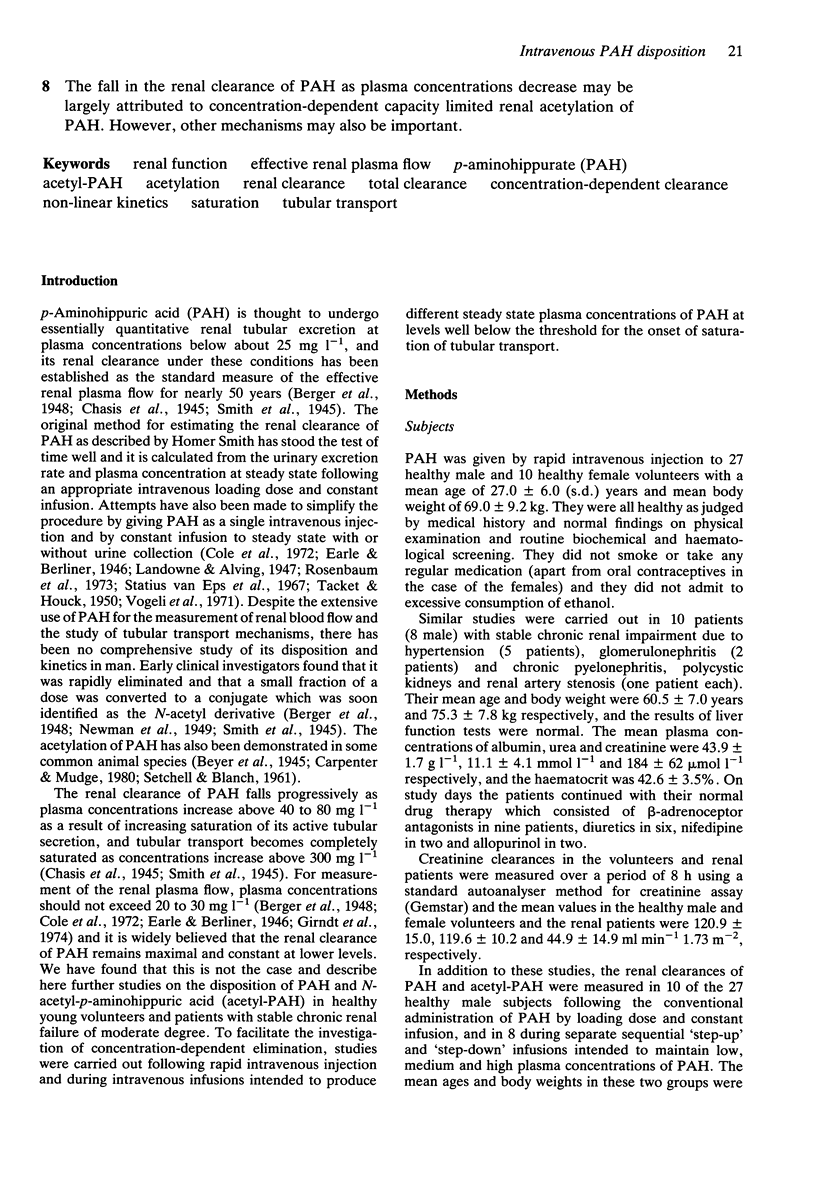
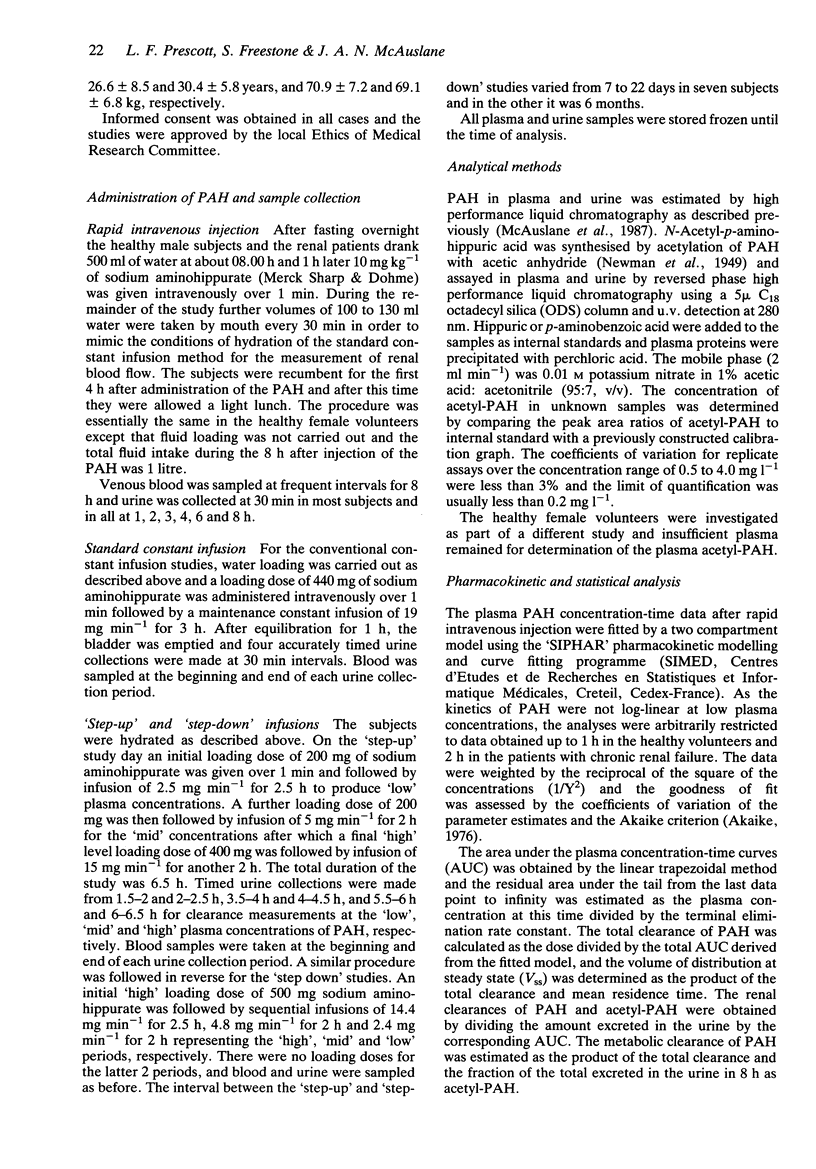
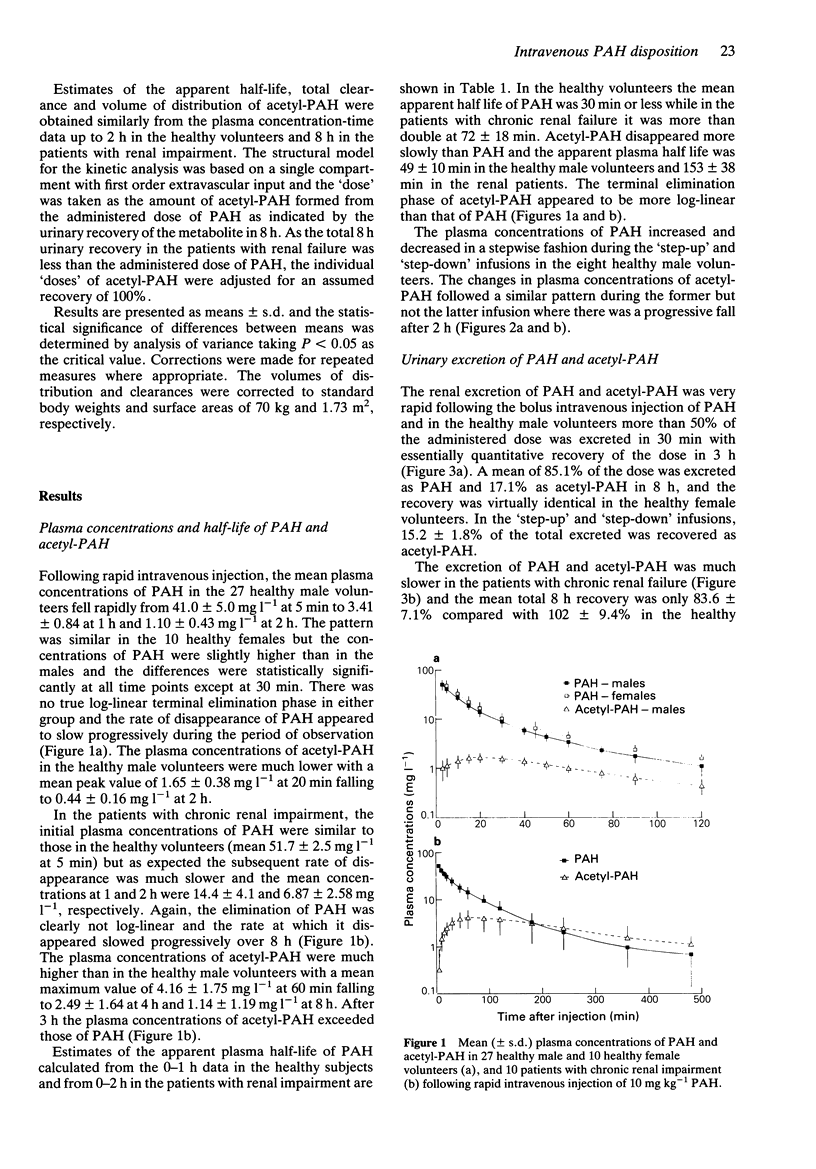
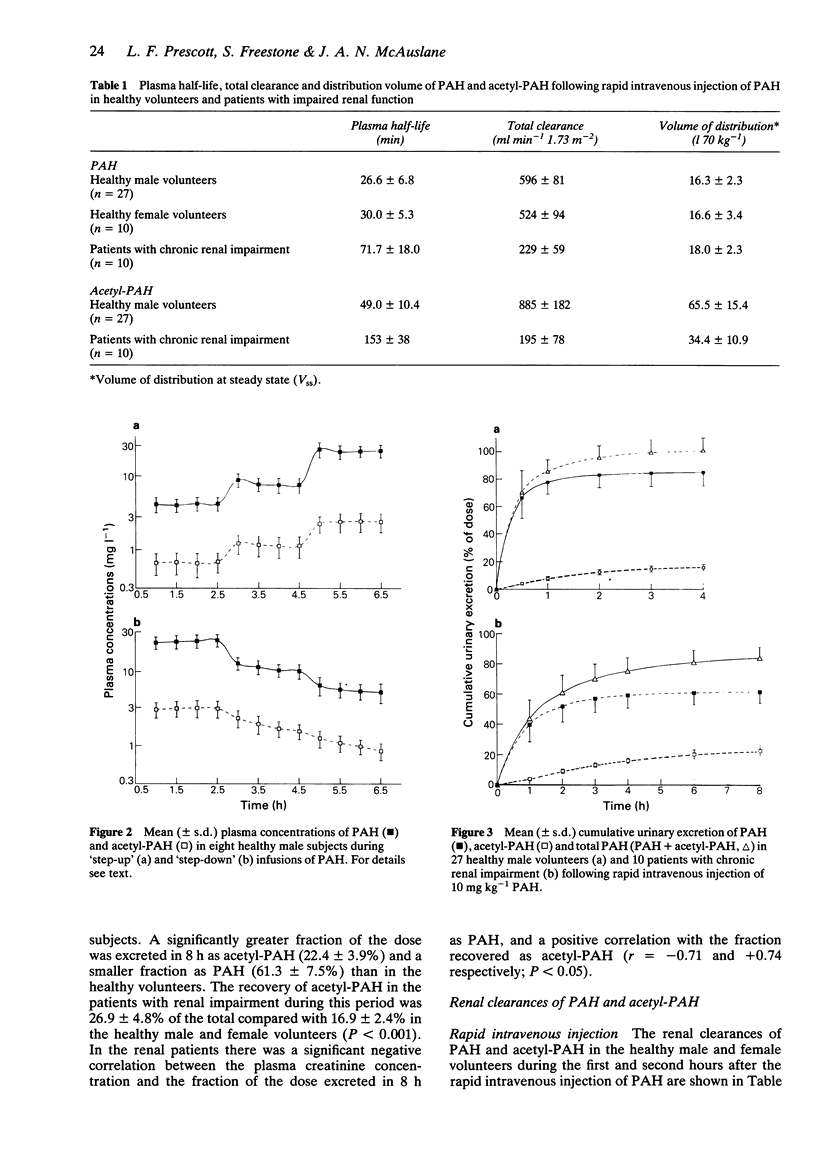
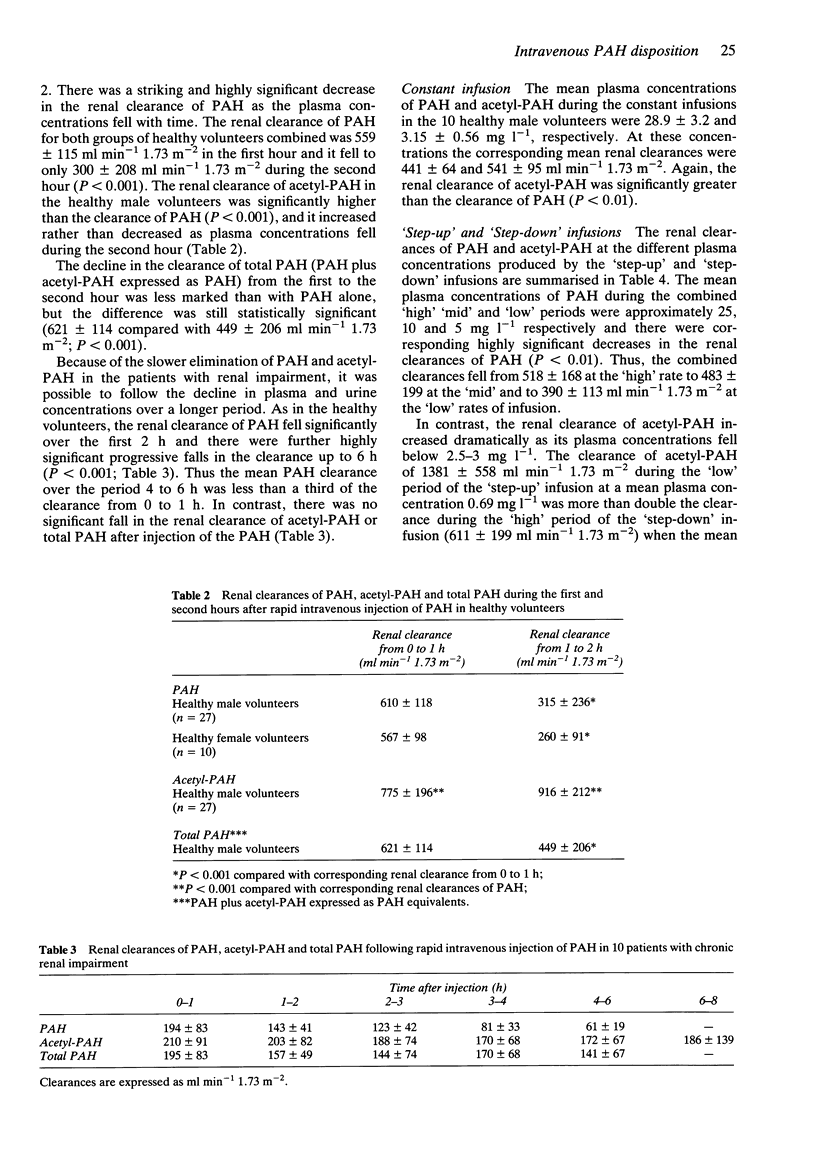
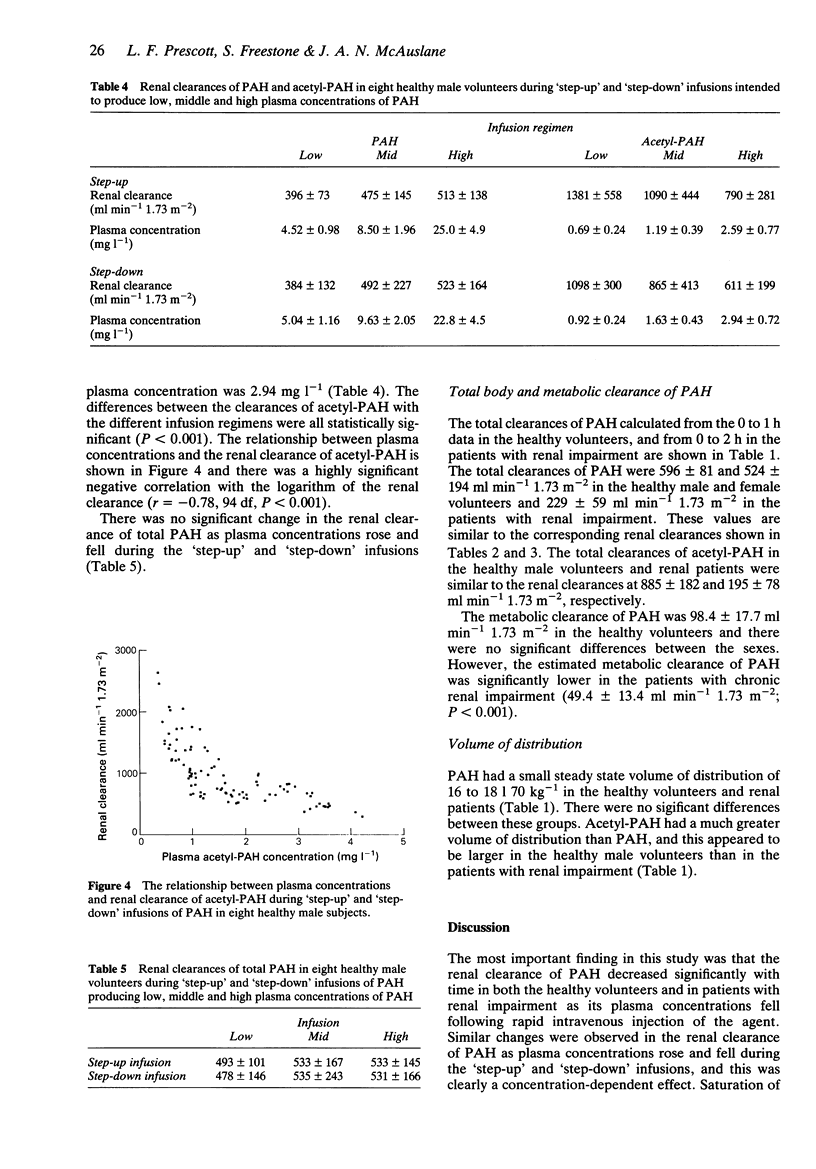
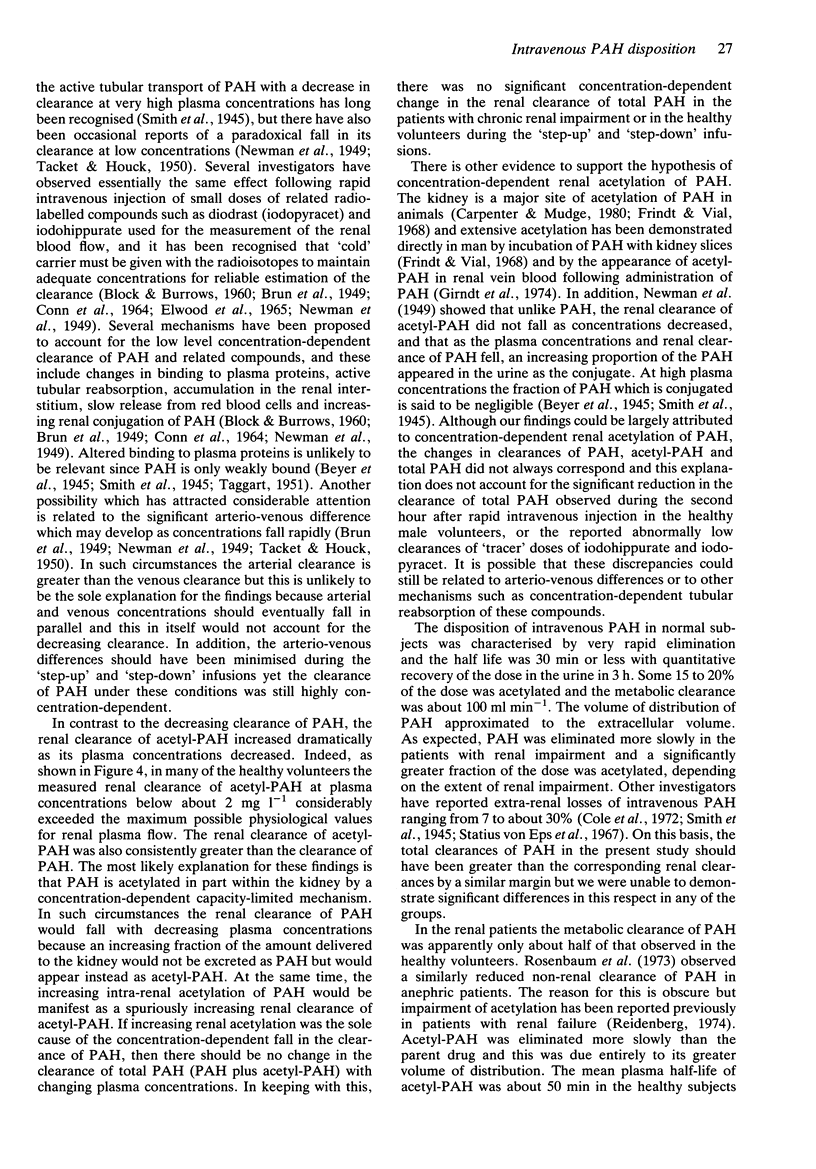
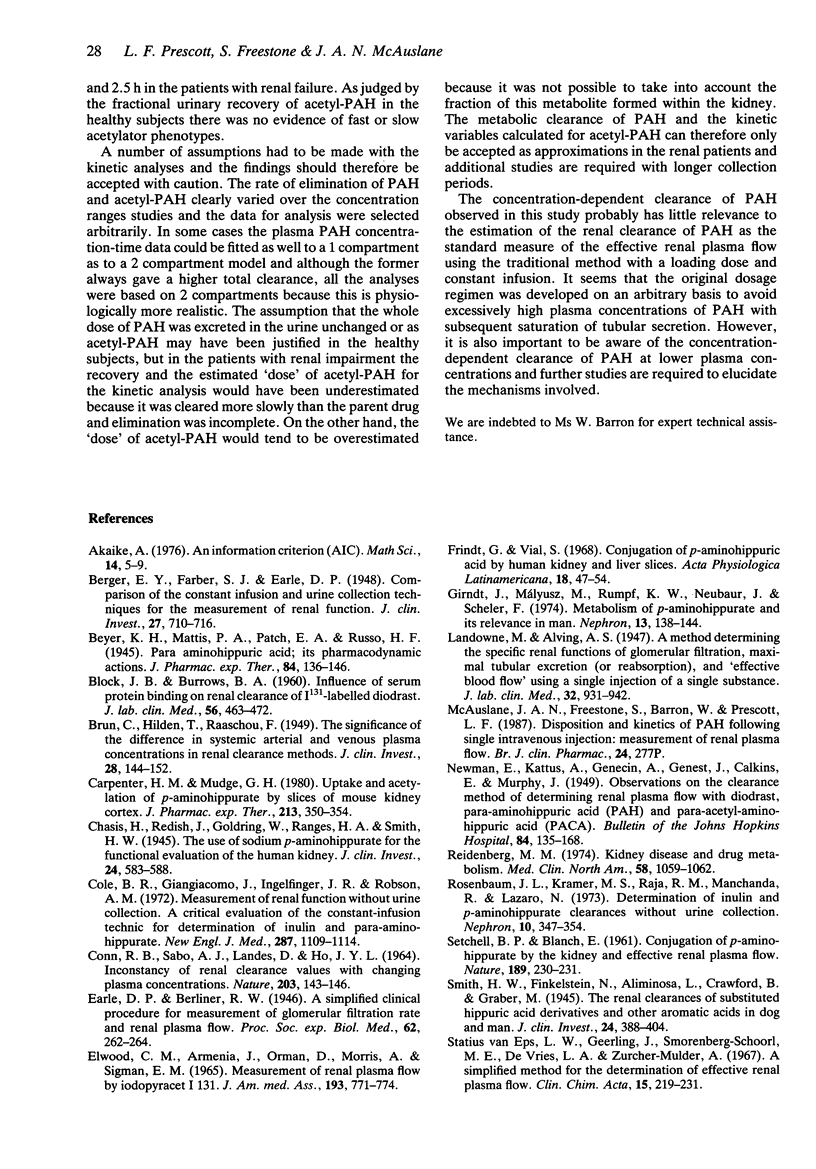
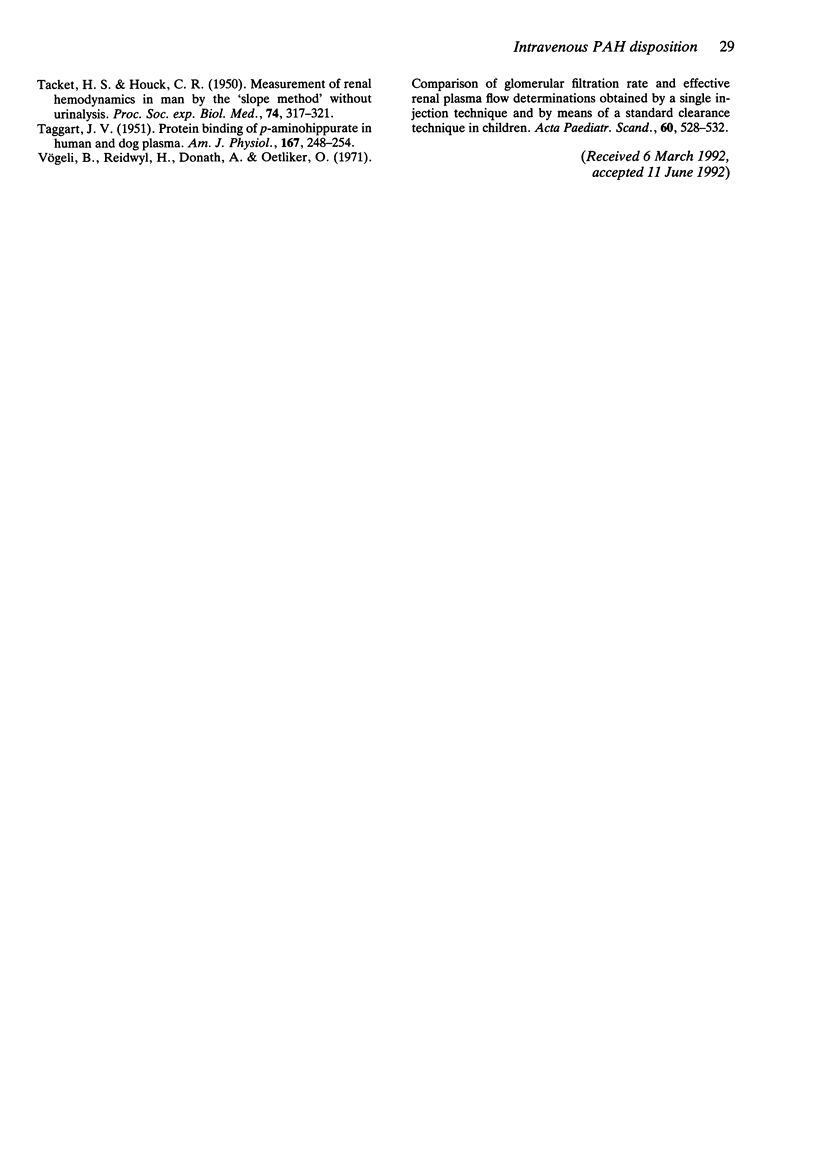
Selected References
These references are in PubMed. This may not be the complete list of references from this article.
- BLOCK J. B., BURROWS B. A. Influence of serum protein binding on renal clearance of I 131-labeled diodrast. J Lab Clin Med. 1960 Sep;56:463–472. [PubMed] [Google Scholar]
- Berger E. Y., Farber S. J., Earle D. P., Jackenthal R. COMPARISON OF THE CONSTANT INFUSION AND URINE COLLECTION TECHNIQUES FOR THE MEASUREMENT OF RENAL FUNCTION. J Clin Invest. 1948 Nov;27(6):710–716. doi: 10.1172/JCI102020. [DOI] [PMC free article] [PubMed] [Google Scholar]
- Brun C., Hilden T., Raaschou F. THE SIGNIFICANCE OF THE DIFFERENCE IN SYSTEMIC ARTERIAL AND VENOUS PLASMA CONCENTRATIONS IN RENAL CLEARANCE METHODS. J Clin Invest. 1949 Jan;28(1):144–152. doi: 10.1172/JCI102043. [DOI] [PMC free article] [PubMed] [Google Scholar]
- CONN R. B., SABO A. J., LANDES D., HO J. Y. INCONSTANCY OF RENAL CLEARANCE VALUES WITH CHANGING PLASMA CONCENTRATIONS. Nature. 1964 Jul 11;203:143–146. doi: 10.1038/203143a0. [DOI] [PubMed] [Google Scholar]
- Carpenter H. M., Mudge G. H. Uptake and acetylation of p-aminohippurate by slices of mouse kidney cortex. J Pharmacol Exp Ther. 1980 May;213(2):350–354. [PubMed] [Google Scholar]
- Chasis H., Redish J., Goldring W., Ranges H. A., Smith H. W. THE USE OF SODIUM p-AMINOHIPPURATE FOR THE FUNCTIONAL EVALUATION OF THE HUMAN KIDNEY. J Clin Invest. 1945 Jul;24(4):583–588. doi: 10.1172/JCI101639. [DOI] [PMC free article] [PubMed] [Google Scholar]
- Cole B. R., Giangiacomo J., Ingelfinger J. R., Robson A. M. Measurement of renal function without urine collection. A critical evaluation of the constant-infusion technic for determination of inulin and para-aminohippurate. N Engl J Med. 1972 Nov 30;287(22):1109–1114. doi: 10.1056/NEJM197211302872202. [DOI] [PubMed] [Google Scholar]
- ELWOOD C. M., ARMENIA J., ORMAN D., MORRIS A., SIGMAN E. M. MEASUREMENT OF RENAL PLASMA FLOW BY IODOPYRACET I-131. JAMA. 1965 Sep 6;193:771–774. doi: 10.1001/jama.1965.03090100017004. [DOI] [PubMed] [Google Scholar]
- Frindt G., Vial S. Conjugation of para-aminohippuric acid by human kidney and liver slices. Acta Physiol Lat Am. 1968;18(1):47–54. [PubMed] [Google Scholar]
- Girndt J., Mályusz M., Rumpf K. W., Neubaur J., Scheler F. Metabolism of p-aminohippurate and its relevance in man. Nephron. 1974;13(2):138–144. doi: 10.1159/000180386. [DOI] [PubMed] [Google Scholar]
- Reidenberg M. M. Kidney disease and drug metabolism. Med Clin North Am. 1974 Sep;58(5):1059–1062. doi: 10.1016/s0025-7125(16)32101-0. [DOI] [PubMed] [Google Scholar]
- SETCHELL B. P., BLANCH E. Conjugation of p-aminohippurate by the kidney and effective renal plasma-flow. Nature. 1961 Jan 21;189:230–231. doi: 10.1038/189230b0. [DOI] [PubMed] [Google Scholar]
- Smith H. W., Finkelstein N., Aliminosa L., Crawford B., Graber M. THE RENAL CLEARANCES OF SUBSTITUTED HIPPURIC ACID DERIVATIVES AND OTHER AROMATIC ACIDS IN DOG AND MAN. J Clin Invest. 1945 May;24(3):388–404. doi: 10.1172/JCI101618. [DOI] [PMC free article] [PubMed] [Google Scholar]
- TACKET H. S., HOUCK C. R. Measurement of renal hemodynamics in man by the "slope method" without urinalysis. Proc Soc Exp Biol Med. 1950 Jun;74(2):317–321. doi: 10.3181/00379727-74-17890. [DOI] [PubMed] [Google Scholar]
- TAGGART J. V. Protein binding of p-aminohippurate in human and dog plasma. Am J Physiol. 1951 Oct;167(1):248–254. doi: 10.1152/ajplegacy.1951.167.1.248. [DOI] [PubMed] [Google Scholar]
- Vögeli B., Riedwyl H., Donath A., Oetliker O. Comparison of glomerular filtration rate and effective renal plasma flow determinations obtained by a single injection technique and by means of a standard clearance technique in children. Acta Paediatr Scand. 1971 Sep;60(5):528–532. doi: 10.1111/j.1651-2227.1971.tb06985.x. [DOI] [PubMed] [Google Scholar]


